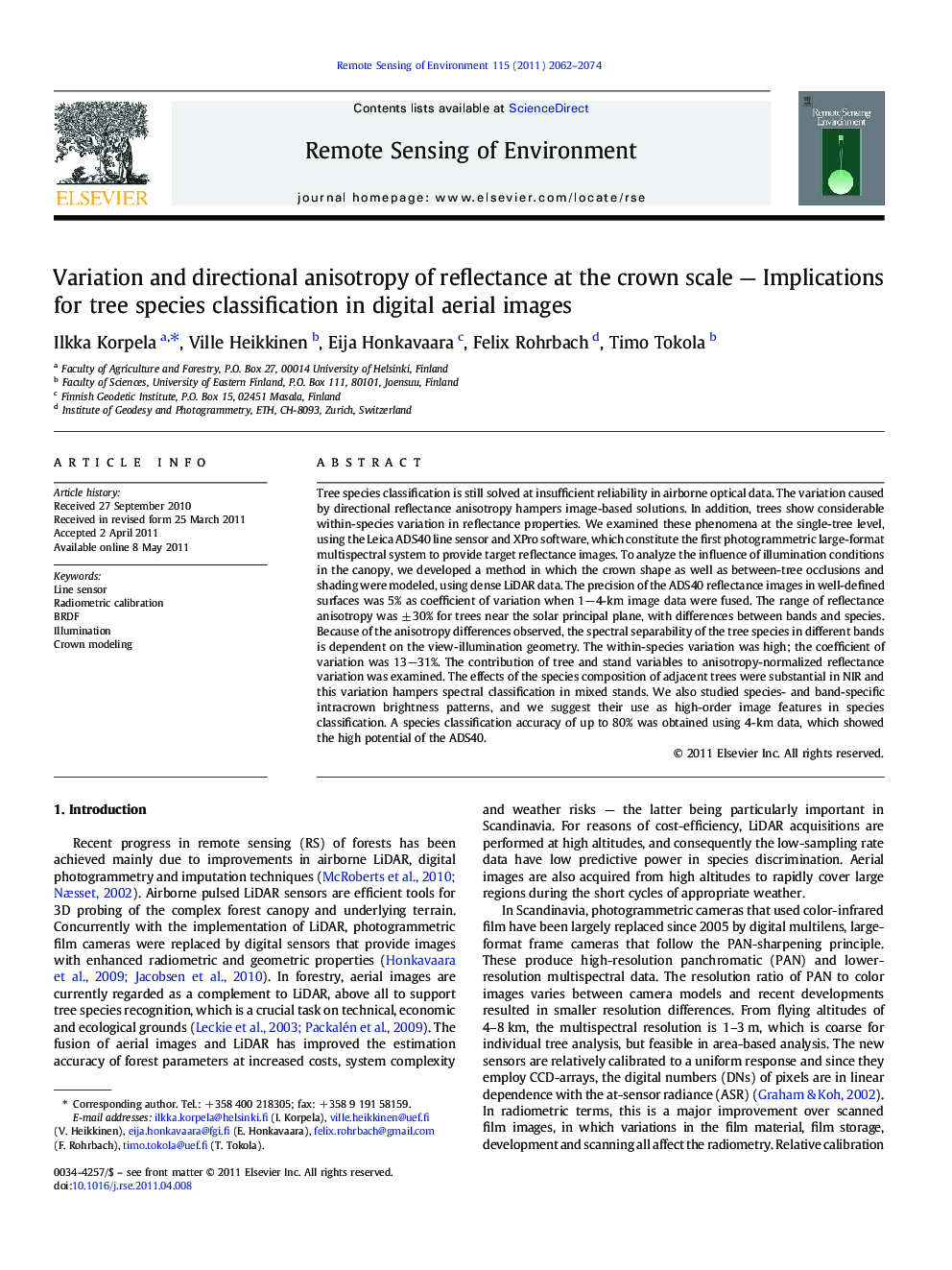| Article ID | Journal | Published Year | Pages | File Type |
|---|---|---|---|---|
| 4459543 | Remote Sensing of Environment | 2011 | 13 Pages |
Tree species classification is still solved at insufficient reliability in airborne optical data. The variation caused by directional reflectance anisotropy hampers image-based solutions. In addition, trees show considerable within-species variation in reflectance properties. We examined these phenomena at the single-tree level, using the Leica ADS40 line sensor and XPro software, which constitute the first photogrammetric large-format multispectral system to provide target reflectance images. To analyze the influence of illumination conditions in the canopy, we developed a method in which the crown shape as well as between-tree occlusions and shading were modeled, using dense LiDAR data. The precision of the ADS40 reflectance images in well-defined surfaces was 5% as coefficient of variation when 1−4-km image data were fused. The range of reflectance anisotropy was ± 30% for trees near the solar principal plane, with differences between bands and species. Because of the anisotropy differences observed, the spectral separability of the tree species in different bands is dependent on the view-illumination geometry. The within-species variation was high; the coefficient of variation was 13−31%. The contribution of tree and stand variables to anisotropy-normalized reflectance variation was examined. The effects of the species composition of adjacent trees were substantial in NIR and this variation hampers spectral classification in mixed stands. We also studied species- and band-specific intracrown brightness patterns, and we suggest their use as high-order image features in species classification. A species classification accuracy of up to 80% was obtained using 4-km data, which showed the high potential of the ADS40.
Research highlights► First study to examine reflectance anisotropy in aerial images at the tree-level. ► LiDAR data was used to characterize the complex within-canopy illumination. ► Factors affecting within-species reflectance variation were quantified. ► Proximity effects by neighboring trees were demonstrated. ► Intracrown brightness patterns were demonstrated as potential image features.
